The mission of the District is to stabilize the level of Big Bear Lake for recreation and wildlife



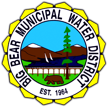


The first Bear Valley Dam was constructed in 1884 at a cost of $75,000. It was built to create a reservoir for downstream irrigation uses in Redlands, resulting in the largest man-made body of water in the world at the time. When Frank E. Brown engineered this dam, he couldn't have possibly envisioned the role Big Bear Lake would play

Bear Valley Dam
First Bear Valley Dam under construction 1884
Fishing off the old dam before construction
of 1912 Eastwood Dam
Original rock dam is visible during extremely low lake levels
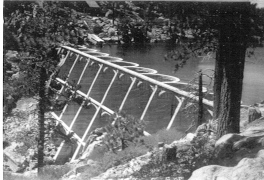
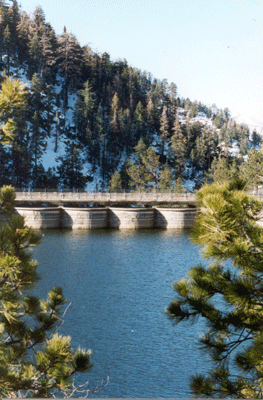
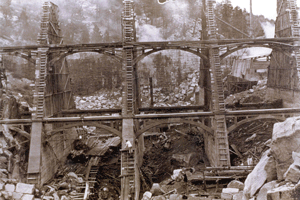
1912 Multi-arch dam under construction
Bear Valley Dam prior to addition of highway in 1924
Bear Valley Dam as it exists today
The present multiple arch dam was built from 1910-1912 at a cost of $138,000 and is located about 100 yards downstream from the Old Bear Valley Dam. The top of the arches is 72 feet 4 inches from the Lake bottom and its construction nearly tripled the storage of the reservoir to 73,000 acre feet. In 1924, a highway bridge was constructed over the top of the buttresses. This road is now part of State Route 18.
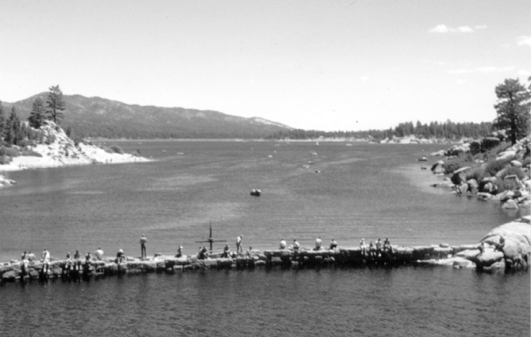
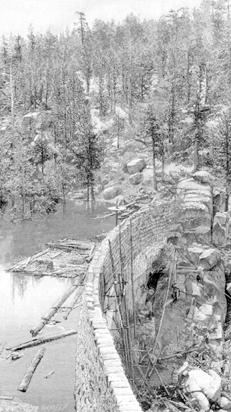
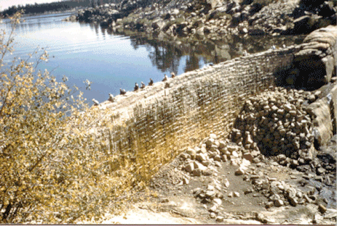
in the future development of the surrounding mountain communities.
Following the completion of this first dam, the valley experienced many years of above average snowfall and plans were made to create an even larger storage reservoir. This included construction of a 65 foot high rock-filled dam, located 300 feet downstream from the original dam. However this project ended in bankruptcy and in 1909 new designs were considered.
In 1910, Bear Valley Mutual Water Company retained an engineer to design and oversee the construction of the current concrete dam.
The storage capacity of the newly created Lake was 25,000 acre feet (one acre foot is enough water for a family of four for one year). Many engineers claimed that this single arch granite dam would not hold. Sometime later, those same doubting engineers declared it "The Eighth Wonder of the World". This dam is still generally intact, but is usually submerged beneath the higher 1912 dam.
History
Big Bear Municipal Water District * P.O. Box 2863 * Big Bear Lake, CA 92315 * (909) 866-5796
Copyright 2010-2014 Big Bear Productions